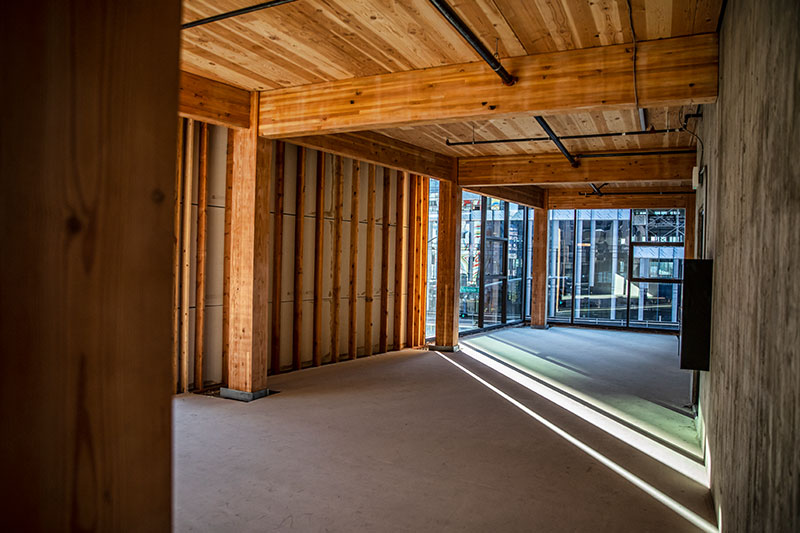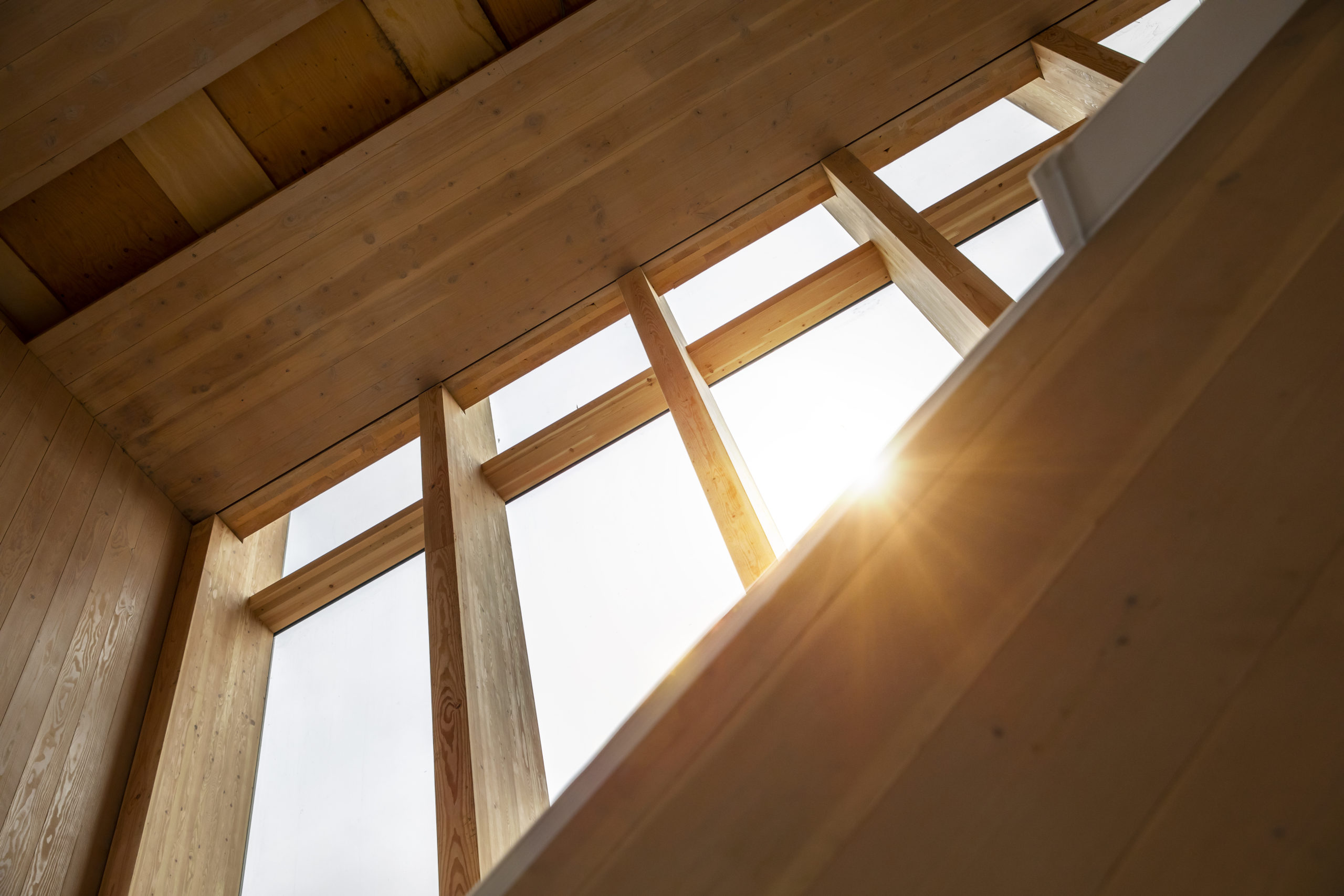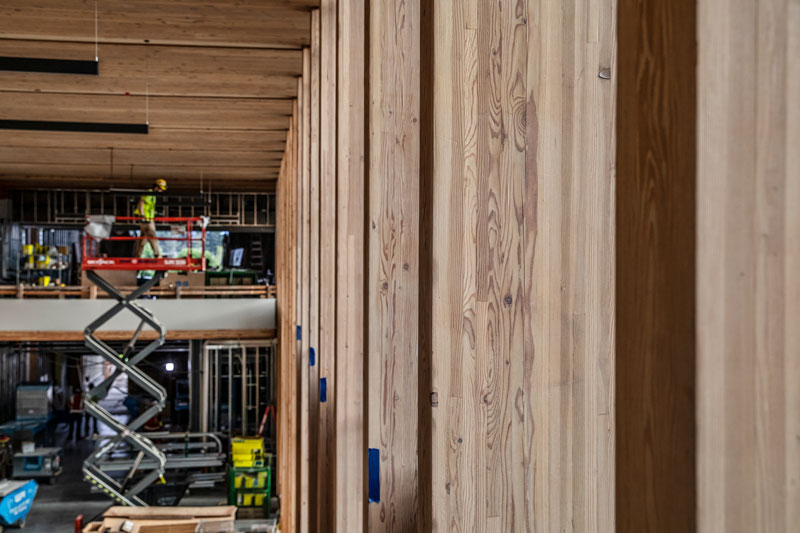As the first U.S. certified manufacturer of Cross-Laminated Timber (CLT), D.R. Johnson (DRJ) is dedicated to showing the benefits of using this innovative building material. To accomplish this, DRJ has partnered with many academic institutions and industry leaders to showcase CLT and glulam’s ability to withstand everything from seismic events to fire blasts.
Most recently, DRJ joined the Softwood Lumber Board, Arup and MyTiCon to participate in fire testing of glulam beam-to-column connectors in Type IV construction. The lack of an “off-the-shelf” fire rated solution for glulam beam-to-column connectors was a barrier to medium-rise mass timber construction. Several successful fire tests existed, but none specifically for this implementation.
The results demonstrate glulam beam-to-column connectors as a safe solution that meets, and in some cases exceeds, stringent fire safety standards for U.S. building design and construction.
“We are thrilled to collaborate with industry leaders to continue to prove the benefits of building with mass timber,” said Valerie Johnson, CEO of DR Johnson Wood Innovations. “The results showcase the durability of mass timber and open up new opportunities for construction.”
At an approved fire testing facility, three full-scale fire tests, loaded to simulate typical building conditions, were completed.
Key findings include:
- All connectors passed and achieved at least a one-hour fire resistance rating, allowing building of up to 85-ft tall
- Architects, designers and engineers can specify the tested connection assemblies and satisfy International Building Code Chapter 7 requirements
- Authority approval of the tests making future mass timber projects easier to build
Why is wood fire resistant?
Mass timber has a natural protection to fire: charring. Charring burns only the outer layer while protecting the rest of the wood—in short, char acts as insulation to the rest of the material. The density of mass timber also leaves no room for air, meaning the fire cannot travel.
The full report is available for download at reThinkWood.com.




